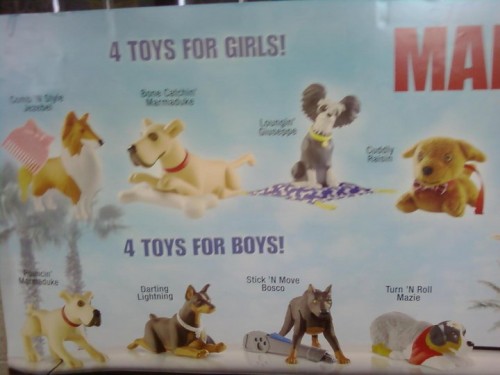
Amanda M. and Lisa C. both submitted a recent Toy Story 3-themed commercial for Visa, pointing out how nice it is to see the Buzz Lightyear character advertised to girls.
I won’t disagree that it’s nice that girls are being included in the marketing for Toy Story 3 (especially as the movie appears to be as boy-centric as most), but I don’t see it as revolutionary. In fact, because we largely value masculine characteristics and pursuits, the idea that girls would be interested in boy things (like space travel) is generally regarded as cute, neat, or even awesome (this is why I like to order bourbon neat on a first date — impresses the men every time). The problem is that the reverse is not true. Because we devalue feminine characteristics and pursuits, we rarely respond to boys’ experimentation with girly things in the same way. In that case, it’s worrisome, strange, or even grotesque. We call the valuing of masculinity over femininity “androcentrism.”
So I would argue that this particular advertisement actually fits nicely with the source of gender inequality today: a devaluation of feminine things at the same time that women are required to perform some degree of femininity (the girl in the commercial is still girly, wearing baby blue, a skirt, and hugging Buzz delightedly before she blasts him off). Of course, this means that men’s life options are narrower than women’s because they have to avoid the stigma of femininity (and that must suck, truly), but at least the things men are restricted to doing and being are valued (both abstractly and with money).
More posts on androcentrism: “woman” as an insult, good god don’t let men wear make up or long hair, don’t forget to hug like a dude, saving men from their (feminine) selves, men must eschew femininity, dinosaurs can’t be for girls, and sissy men are so uncool.
Lisa Wade, PhD is an Associate Professor at Tulane University. She is the author of American Hookup, a book about college sexual culture; a textbook about gender; and a forthcoming introductory text: Terrible Magnificent Sociology. You can follow her on Twitter and Instagram.











